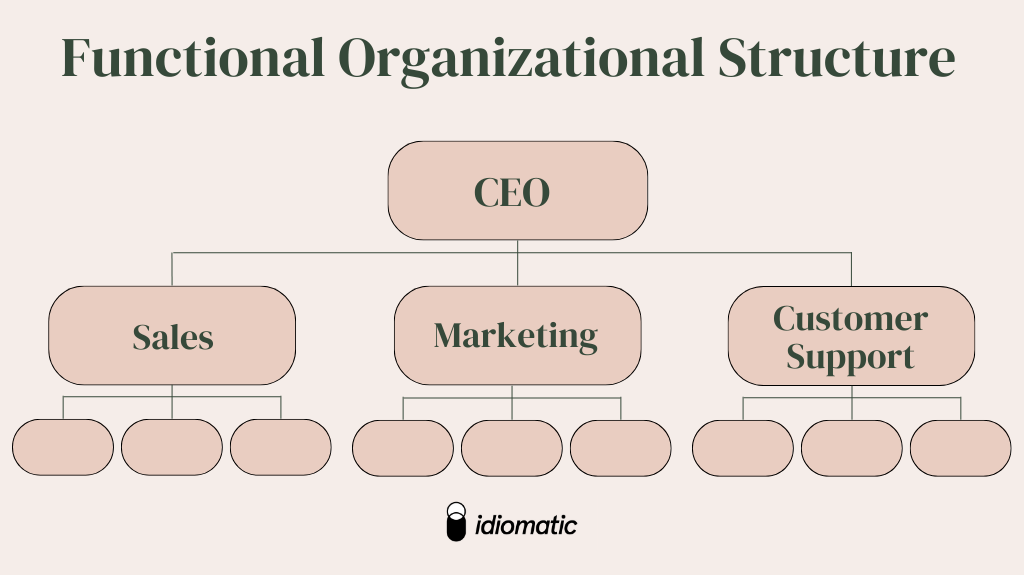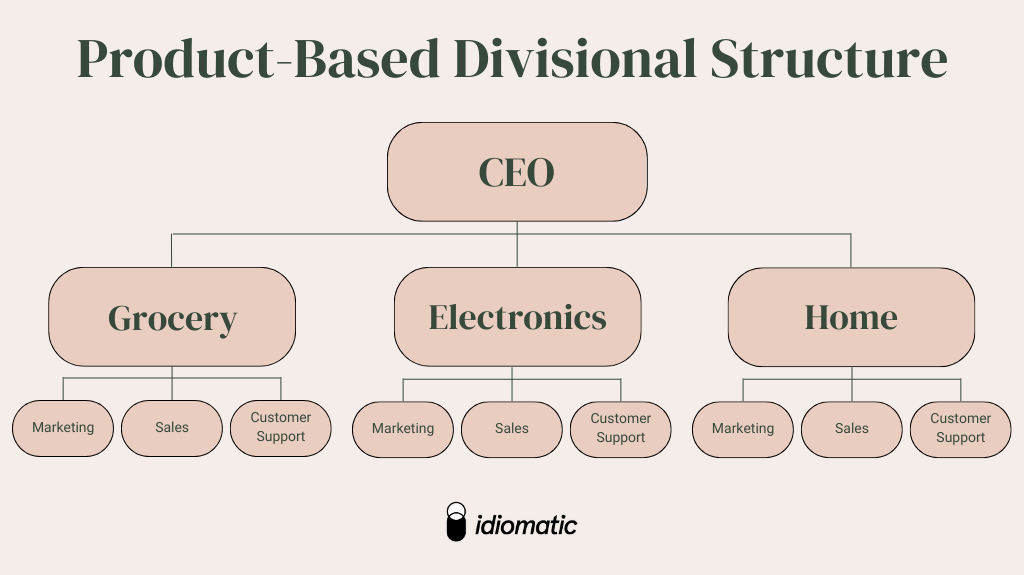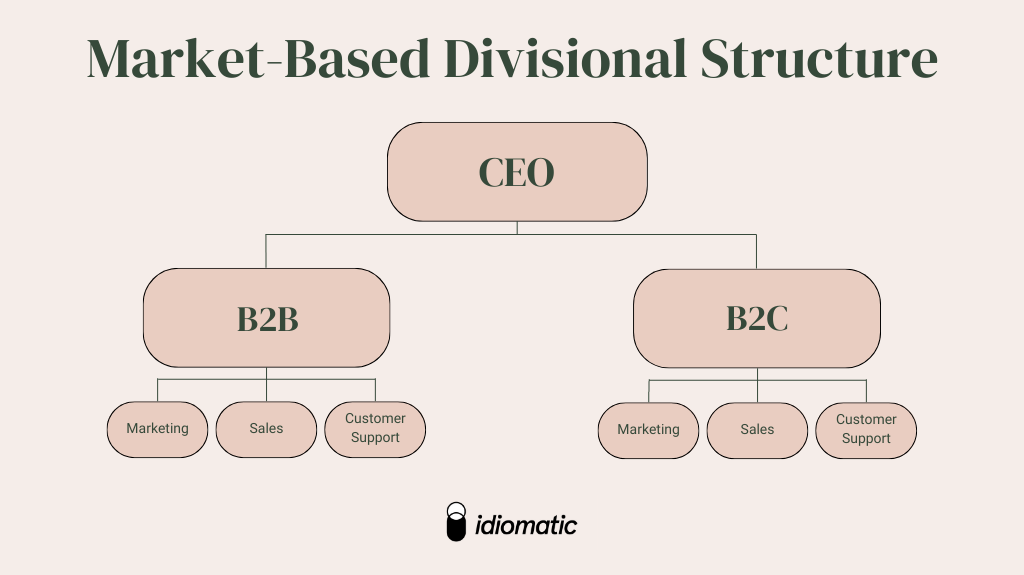What do all successful customer service departments have in common? They’ve organized their team hierarchy around best supporting their customer and catering to their internal team members’ expertise and experience.
Does your organization have a formalized customer service organizational structure? No matter your company size or niche, defining a customer support team structure is critical to business scalability, serving customer requests efficiently, and ensuring your team members are working to their best ability.
In this article, we’ll explore customer service organizational structures with actionable advice for how you can organize your customer support team for business success.
Contents
- What is a customer service organizational structure?
- Internal benefits of a defined customer service structure
- How does organizational structure affect customer service?
- What are the different types of organizational structures?
- How do you organize a customer support team?
- Structuring your customer service team for success
What is a customer service organizational structure?
A customer service organizational structure includes the roles and relationships between various functions of a customer service team. It also defines the hierarchy between the roles, so everyone knows whom they report to, who reports to them, and whom to contact for specific queries.
A functional customer service department is critical to the success of your customer-facing support effort. Presenting a unified, efficient front to your customers will likely result in increased customer trust and satisfaction.
Internal benefits of a defined customer service structure
When you look at the benefits of a unified and structured customer support team, several trends emerge:
1. Increased employment opportunities
When your customer service team has a clearly defined organizational structure, it’s easy to see where gaps exist so you can hire new team members or promote them from within. This supports increased employee retention as they’re more likely to remain with a company offering opportunities for upward growth.
2. Teamwork supports
Many customer service organizational structures are designed with collaboration in mind. This includes creating clear lines (and rules) of communication, clearly defining the decision-making processes, and creating opportunities for collaboration and feedback. Well-defined responsibility hierarchies provide every team member with the support they need to do their job to the best of their ability.
3. Efficient systems and processes
Businesses that plan to scale operations benefit from clearly defined team structure systems and processes. For customer service needs, this includes staffing strategies to support planned periods of increased customer requests. Well-planned org structures also make hiring needs more clear and enable managers to add internal team members as needed without full restructuring or disruption in the business.
4. Clear and fair hierarchy
When your customer service team has a strong team leader and a clear structure for team reports, there is more clarity for whom to speak with internally. For example, many customer service organizational structures create opportunities for team members to report to multiple managers or supervisors. This helps share managerial responsibilities and provides opportunities for fairness in the decision-making process.
How does organizational structure affect customer service?
When you have a clearly defined customer service structure, your customers will benefit. Here are a few ways your choice of organizational structure for your customer support team will impact your customer service:
Customers know who to contact
Formalized customer service organizational structures help you form better customer relationships, and vice versa. When you clearly communicate your organizational structure to your customers, they know exactly who to contact with their questions. This is especially important for your VIP customers to know who their contact within your customer success team is.
Increased responsiveness
When your internal customer experience team is organized, you have the structure in place to identify the right person to respond to each query much faster than if you had manual rerouting of support tickets to find the right person for the task.
Increased customer loyalty
When customers get what they need from your customer service representatives, they are more likely to have a positive customer experience. Customer satisfaction is amplified when your teams can always provide this good customer service.
Aside from tracking metrics like Customer Retention and Lifetime Value, you can collect other forms of customer data to measure the success of your customer service teams throughout the customer journey. These may include measuring your company’s Net Promoter Score (NPS), Customer Satisfaction Score (CSAT), and Customer Effort Score (CES).
👉 Learn more ways to increase customer loyalty by delighting your customers.
What are the different types of organizational structures?
Structure your customer service teams while considering the size of your company, your offerings, and customer expectations for great customer service. Here are several common structures you’re likely to find in service-based organizations:
Functional organizational structure

This is the most common structure to see with good customer service teams. Throughout the entire organization, staff are divided by job function. Each department head reports to the general manager or supervisor, who reports to someone higher in the hierarchy until you get to a CEO, COO, or company owner/founder.
Examples of functional organizational structures include departments for
- Sales
- Marketing
- Customer Support
- Accounting
Product-based divisional structure

Often, organizational structures are based on your products or offerings. Each product may have a different organizational structure. An example of this occurs in a supermarket, where the deli department has its own structure, which differs from that of the cashiers or the pharmacy.
For example, your company may sell three distinct types of products. Each product group would have its own marketing, sales, and customer services teams that worked independently of their counterparts in other product teams.
Market-based divisional structure

Market-based organizational structures may split your customer service team into separate structures based on a client type. It’s common in organizations that offer a diverse range of products or services, allowing each department to focus on its areas of specialization.
For example, you may sell products and services to B2B and B2C customers. In that case, your B2B team would have a dedicated marketing, sales, and customer support team, as the customer’s needs would differ.
Geographical divisional structure

More and more organizations are global and have teams in satellite offices around the world. In some cases, having separate organizational structures for each region may make sense.
For example, your customer support teams in France and Germany would report to a team lead in the UK, and teams from North America would report to a local team lead in their region.
Process-based structure
In process-based organizational structures, teams are organized by their job tasks and how these tasks interact with other teams in the organization. This process defines each role and how it interacts with other functions in the customer journey. This helps you put individuals with specialized or advanced knowledge in specific parts of the customer support journey in roles where they can focus on their strengths.
For example, a SaaS organization may have a customer onboarding team that’s responsible for the handoff from sales and who trains a new customer on the software. Then, they may pass the customer over to a customer success team, who work with them on a daily basis, handling general issues. There may also be a technical support team with engineering knowledge to assist with software issues and a customer retention team, which any of the teams could escalate an unhappy customer to. Each team has very specialized skills and works within specific points of the customer journey.
Matrix organizational structure
Some teams benefit from a matrix organizational structure in their customer service team. In this structure, individuals may report to two or more managers. It provides more flexibility in decision-making and encourages better communication practices as you work more closely with other departments.
For example, your customer service team may be divided into B2B and B2C teams and report to those managers and a customer service manager.
Circular organizational structure
Imagine this organizational structure like a set of rings. Unlike the functional structure, where the executives are at the top, in a circular structure executives are in the center. They communicate their vision outward to the managers of each department and those managers then communicate with their individual team members–and vice versa. This supports a stronger, multi-directional communication model where everyone works towards the same goal.
Flat organizational structure
This team structure has less defined roles and hierarchy. It relies on the company CEO and entry-level employees working together through good communication, collaboration, and honest feedback. It can be a productive organizational model but can often make decision-making more difficult.
How do you organize a customer support team?
Are you ready to get started creating a more organized customer service department? Here are the steps to get started:
1. Pick an organizational structure
Your choice of organizational structure will depend on many factors, including
- Your company size: Smaller teams may outsource many roles or have hybrid roles, so a detailed hierarchical customer service structure may not be necessary. Growing businesses should implement flexible organizational structures based on their business goals and expected growth. Large, enterprise-level organizations more often benefit from a detailed or complex structure considering time zones, a larger suite of offerings, and increased employee numbers. (Examples: Flat or functional structures)
- The geographical regions your organization serves: An organizational process that supports employees and customers worldwide may require a structure that supports multi-time zone interactions. (Example: Geographical divisional structure)
- The products and services you offer: If you have multiple product categories or diverse customer demographics, you may benefit from a structure that separates business tasks into these divisions rather than one overarching customer support team to support all product lines. (Examples: Product- or market-based divisional structures)
- Customer expectations for customer support: If you have customers who require support 24/7, you may benefit from structures that allow multi-time zone support. (Examples: Geographical or matrix organizational structures)
2. Define roles and responsibilities
Once you know the structure, it’s time to define the roles and responsibilities of each team member. With most of the organizational structures we’ve suggested, there is some flexibility in how you implement them, so use these examples as a guide and customize them to your business.
Here are some typical roles you may consider including in your customer support team structure:
- Customer Service Manager: Responsible for leading the team, setting expectations, liaising between departments, and creating budgets.
- Customer Service Representatives: Responsible for customer interactions and directly dealing with queries and complaints.
- Technical Support Specialist: These are customer service representatives who deal with more technical support queries, thus requiring a higher level of detail with the technical aspects of the company’s products, services, and processes for advanced troubleshooting.
- Account Managers: Account Managers are responsible for customer relationships and support team members in solving customer problems, may support up-selling to clients, and are responsible for overall customer satisfaction management.
When assigning these roles, consider the skills and expertise of the candidate and their performance drivers (examples: are they driven by money? Are they independent workers or team workers? Does external praise motivate their efforts?)
3. Design an efficient decision-making process
Many company employees suffer from near-endless meetings that could have been done over email or a phone call. These are often a result of unclear internal processes for decision-making. When your customer service organizational structure has a clear hierarchy, and each team member understands their role in the decision-making process, decisions can be made much faster.
Create a clearly defined process for what needs managerial approval (such as offering a free product to a customer) and what can be approved by a customer service representative (such as providing a disgruntled customer 10% off their next month’s subscription).
4. Create effective communication channels
Good processes and organizational structures won’t help if the lines of internal and external communications are ineffective. To create efficient communication channels, you must first pick the channels you will use (examples: social media, chatbots, internal messaging systems, phone) and develop guidelines for communication.
For example, your process may outline that customer queries that need escalation internally must be submitted through your ticket-routing system, but employee feedback and suggestions to their manager must be made over email.
It’s also critical to communicate your internal structure to your customers. They don’t necessarily need to see your entire organizational tree, but they must know exactly who to contact or what channels to use, depending on their query or problem. Eliminate any confusion by clearly communicating this to your customers.
5. Monitor and measure using KPIs
A successful company will have processes in place to measure the success of its customer service teams. This can be obtained through customer feedback and measurement of metrics, including NPS, CSAT, and CES: Customers can be prompted to provide feedback after using a chatbot, talking to your contact center through phone support, or after an email interaction. If any trends or inefficiencies exist, you can adjust your team, processes, or structure to optimize customer satisfaction.
Structuring your customer service team for success
Once you’ve structured your customer service team, assign someone to monitor and measure your customer service team KPIs to ensure an optimally performing team.
It doesn’t all have to be done manually, though. Idiomatic is an AI-driven customer satisfaction software that takes customer feedback from various touch points such as customer support tickets, surveys, and app reviews. It then analyzes that customer feedback at scale, allowing you to understand trends in customer feedback and pain points. Here’s a quick video that shows how Idiomatic does this:
To better structure your customer support team for success, you can use the Idiomatic’s insights to make business decisions like hiring more reps, better training for a specific team (e.g. accounting or tech support), or moving to a different organizational structure altogether (e.g. from a circular structure to a process-based one).
Ask us about a demo of Idiomatic to learn how you can measure the success of your customer service teams using AI and machine learning.



